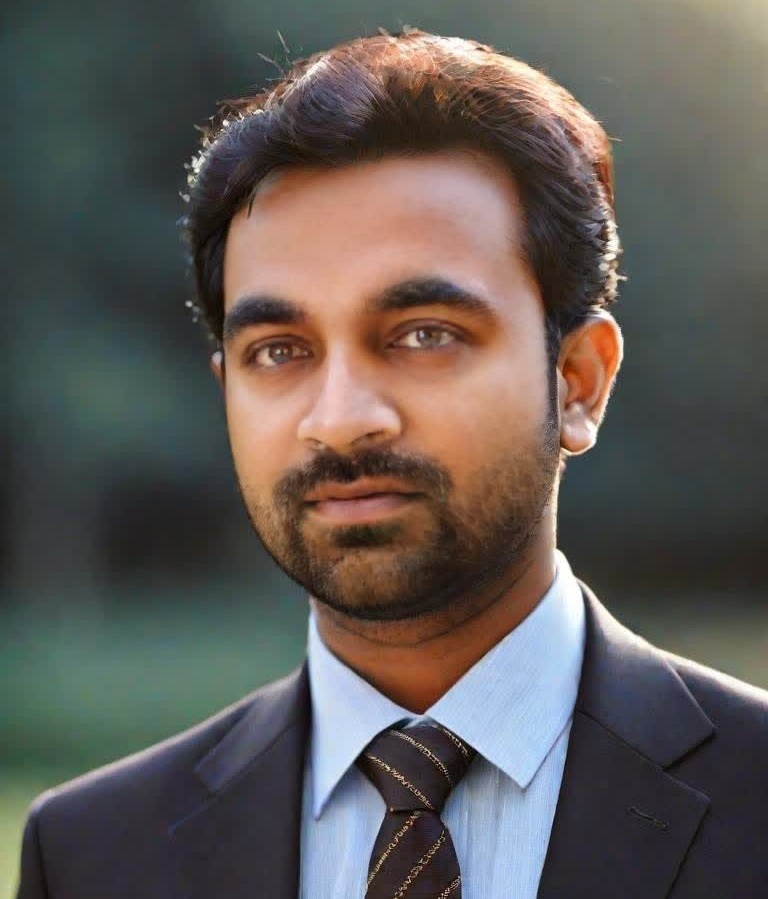Computer Vision: YOLO Custom Object Detection with Colab GPU
YOLO: Pre-Trained Coco Dataset and Custom Trained Coronavirus Object Detection Model with Google Colab GPU Training

Lectures -53
Duration -5 hours
Lifetime Access

Lifetime Access
30-days Money-Back Guarantee
Get your team access to 10000+ top Tutorials Point courses anytime, anywhere.
Course Description
Hi There!
Welcome to my new course, 'YOLO Custom Object Detection Quick Starter with Python'. This is the fourth course from my Computer Vision series.
As you know, Object Detection is the most commonly used application of Computer Vision, in which the computer will be able to recognize and classify objects inside an image.
We will be specifically focusing on (YOLO), You only look once which is an effective real-time object recognition algorithm which is featured in Darknet, an open source neural network framework
This course is equally divided into two halves. The first half will deal with object recognition using a predefined dataset called the Coco dataset, which can classify 80 classes of objects. And in the second half, we will try to create our own custom dataset and train the YOLO model. We will try to create our own coronavirus detection model.
Let's now see the list of interesting topics that are included in this course.
At first, we will have an introductory theory session about YOLO Object Detection system.
After that, we are ready to proceed with preparing our computer for Python coding by downloading and installing the Anaconda package, and will check and see if everything is installed fine.
Most of you may not be coming from a Python-based programming background. The next few sessions and examples will help you get the basic Python programming skills to proceed with the sessions included in this course. The topics include Python assignment, flow control, functions, and data structures.
Then we will install OpenCV, which is the Open Source Computer Vision library in Python.
Then we will have an introduction to Convolutional Neural Networks , its working, and the different steps involved.
Now we will proceed with Part 1, which involves Object Detection and Recognition using YOLO pre-trained model. We will have an overview of the Yolo model in the next session, and then we will implement Yolo object detection from a single image.
Often, YOLO gives back more than one successful detection for a single object in an image. This can be fixed using a technique called NMS, or Non Maxima Suppression. We will implement that in our next session.
And using that as the base, we will try the Yolo model for object detection from a real time webcam video, and we will check the performance. Later, we will use it for object recognition from the pre-saved video file.
Then we will proceed with Part 2 of the course, in which we will attempt to train a darknet YOLO model. A model that can detect coronavirus from an electron microscope image or video output.
Before we proceed with the implementation, we will discuss the pros and cons of using a pre-trained dataset model and a custom dataset trained model. Also about the free GPU offered by Google colab and its features.
In the next session, we will start with phase 1 of our custom model, in which we will do the preparation steps to implement the custom model. We will first download the Darknet source from GitHub and prepare it. We will then download the weight files required for both testing and training. And then we will edit the required configuration files to make it ready for our custom coronavirus detector.
In the second phase of our custom model, we will start collecting the required data to train the model. We will collect coronavirus images from the internet as much as we can and organize them into folders. Then we will label or annotate the coronavirus object inside these images using an open-source annotation tool called labelImg. Then we will split the gathered dataset, 80% for training and 20% for testing. And finally, we will edit and prepare the files with the location of the training and testing datasets.
Now that we have all our files ready, in our third phase, we will zip and upload them to Google Drive. After that, we will create a Google Colab notebook and configure the Colab runtime to use the fast, powerful, yet free GPU service provided by Google. Then we will mount our Google Drive to our colab runtime and unzip the Darknet zip we uploaded.
Sometimes files edited in non-Unix environments may be having problems when compiling the darknet. We have to convert the encoding from DOS to Unix as our next step. Then we will compile the darknet framework source code and proceed with testing the darknet framework with a sample image in our fourth phase.
The free GPU based runtime provided by Google Colab is volatile. It will be reset every 12 hours. So we need to save our weights periodically during training to our Google Drive, which is permanent storage. So in phase five, we will link a backup folder in Google Drive to the colab runtime.
Finally, in phase 6, we are ready to proceed with training our custom coronavirus model. We will keep on monitoring the loss for every iteration or epoch, as we call it in nerual network terms. Our model will automatically save the weights every 100th epoch securely to our google drive backup folder.
We can see a continues decrease in the loss values as we go through the epoch. And after many iterations, our model will come to a convergence or flatline state in which there is no further improvement in loss. At that time, we will obtain a final weight.
Later, we will use that weight to make a prediction for an image that contains coronavirus in it. We can see that our model clearly detects objects. We will even try this with a video file.
We cannot claim that it is a fully fledged, flawless, production ready coronavirus detection model. There is still room for improvement. But anyway, by building this custom model, we came all the way through the steps and process of making a custom yolo model, which will be a great and valuable experience for you.
And then later, in a quick session, we will also discuss few other case studies in which we can implement a custom trained YOLO model, the changes we may need to make for training those models, etc.
That's all about the topics which are currently included in this quick course. The code, images, and weights used in this course have been uploaded and shared in a folder. I will include the link to download them in the last session or the resource section of this course. You are free to use the code in your projects with no questions asked.
Also, after completing this course, you will be provided with a course completion certificate, which will add value to your portfolio.
So that's all for now, See you soon in the classroom. Happy learning and have a great time.
Goals
- Python-based YOLO Object Detection uses Pre-trained Dataset Models as well as custom-trained Trained models. Case study of coronavirus detector using YOLO
Prerequisites
- A decent configuration computer (preferably Windows) and an enthusiasm to dive into the world Image and Object Recognition using Python

Curriculum
Check out the detailed breakdown of what’s inside the course
Course Introduction and Table of Contents
1 Lectures
-
Course Introduction and Table of Contents 09:17 09:17
Introduction to YOLO Object Detection
1 Lectures

Environment Setup - Installing Anaconda
1 Lectures

Python Basics (Optional)
4 Lectures

Installing OpenCV Library
1 Lectures

Introduction to CNN - Theory Session
1 Lectures

YOLO Pre-trained Object Detection From Image
4 Lectures

YOLO Pre-trained Object Detection From Image - NMS
2 Lectures

YOLO Pre-trained Object Detection From Realtime Webcam Video
1 Lectures

YOLO Pre-trained Object Detection From Pre-saved Video
1 Lectures

Introduction to Custom Trained YOLO Model
1 Lectures

YOLO Custom Training Phase 1 - Preparing Darknet
3 Lectures

YOLO Custom Training Phase 2 - Data Collection
2 Lectures

YOLO Custom Training Phase 2 - Image Labeling
2 Lectures

YOLO Custom Training Phase 2 - Train Test Split
1 Lectures

YOLO Custom Training Phase 2 - Data Preparation
2 Lectures

YOLO Custom Training Phase 3 - Data Sync
1 Lectures

YOLO Custom Training Phase 4 - Compile and Test Darknet
3 Lectures

YOLO Custom Training Phase 5 - Create Symbolic Link to Drive
1 Lectures

YOLO Custom Training Phase 6 - Start Training
4 Lectures

YOLO Custom Corona virus Detection from Image
1 Lectures

YOLO Custom Corona virus Detection from Video
1 Lectures

Other Real-world Case Studies and Scenarios
1 Lectures

Colab GPU Usage Limit Issue
1 Lectures

YOLOv4 - Custom Training Step by Step
6 Lectures

OpenCV upgrade for YOLOv4
1 Lectures

YOLOv4 Pretrained Object Recognition from Image and Video
1 Lectures

YOLOv4 Custom Coronavirus Detection from Image
1 Lectures

YOLOv4 Custom Coronavirus Detection from Video
1 Lectures

SOURCE CODE AND FILES ATTACHED
1 Lectures

Instructor Details

Abhilash Nelson
Ph.D, Computer Engineering Master, Senior Trainer & CoderI am a pioneering, talented and security-oriented Android/iOS Mobile and PHP/Python Web Developer Application Developer offering more than eight years’ overall IT experience which involves designing, implementing, integrating, testing and supporting impact-full web and mobile applications.
I am a Ph.D in AI and Deep Learning and Post Graduate Masters Degree holder in Computer Science and Engineering.
My experience with PHP/Python Programming is an added advantage for server based Android and iOS Client Applications.
I am currently serving full time as a Senior Solution Architect managing my client's projects from start to finish to ensure high quality, innovative and functional design.
Course Certificate
Use your certificate to make a career change or to advance in your current career.

Our students work
with the Best


































Related Video Courses
View MoreAnnual Membership
Become a valued member of Tutorials Point and enjoy unlimited access to our vast library of top-rated Video Courses
Subscribe now
Online Certifications
Master prominent technologies at full length and become a valued certified professional.
Explore Now


 Updated on Dec, 2025
Updated on Dec, 2025
 Language - English
Language - English